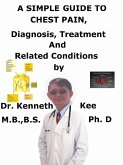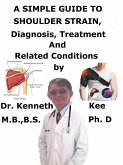Recently an old patient brought his 13 year old grandson to consult me about the sunken appearance of the boy's chest.
It was a typical case of pectus excavatum.
Because the boy was greatly distressed by his appearance I referred him to orthopedic surgeon for evaluation.
Pectus excavatum is the abnormal funnel at the sternum
The chest in affected children has a sunken appearance
It can occur in families through inheritance
A few genetic syndromes are associated with it such as Marfans
Usually there are no symptoms except for the sternal depression
Some children may have decreased breathing function
The most important test is the X-ray studies
Pulmonary and cardiac tests will determine the severity
CT scan and MRI of the chest will then confirm the necessity
Whether the affected child has the need for surgery
Measurement of the depression will help decide the treatment
Mild pectus excavatum cases do not require any adjustment
Mild pectus excavatum will just require physiotherapy
Moderate depression may be filled with dermal fillers
Severe pectus excavatum may require surgical intervention
With solid silicone and prosthetic implantation
-An original poem by Kenneth Kee
Pectus excavatum or Funnel Chest is an abnormal development of the rib cage that gives the chest a caved-in or sunken appearance.
It is the most frequent congenital chest wall abnormality in children (90%).
Pectus excavatum (a Latin term meaning hollowed chest) is the most frequent congenital deformity of the anterior wall of the chest, in which several ribs and the sternum grow abnormally.
The deformity affects the 3rd to 7th costocartilages or ribs but the most serious deformity happens in the area of the xiphisternum.
Funnel Chest is featured by a depression in the sternum, normally the lower half of the sternum.
The deformity may be symmetrical affecting both sides of the chest equally.
It is more often asymmetrical and may involve other parts of the thorax.
Pectus Excavatum may be noticed in an infant at birth or the person may develop it later during childhood.
The presenting patient is often a thin, tall male that appears to be slouching, and thoracic scoliosis may also be observed.
Sternal depression and rotation may depress the heart, causing a group of cardiopulmonary signs and symptoms, including exercise intolerance.
A heart murmur can be heard that is due to a defective mitral valve (i.e., prolapse, regurgitation).
Exercise intolerance is one of the most frequent complaints.
The psychological impact on patients can be considerable, particularly during the adolescent period.
The typical diagnostic feature is a sunken appearance of the sternum.
The heart can be displaced or rotated.
The base lung capacity is decreased
The Haller index (HI) is the standard index utilized to quantify the severity of a pectus excavatum deformity.
Mild cases have also documented to have been treated with corset-like orthopedic support vests and physiotherapy methods and exercise.
These exercises are planned to stretch and strengthen the muscles in the chest, back and shoulders.
Reduced cardiopulmonary function is the most important indication for surgical repair.
There are 2 forms of surgical correction: open repair (Ravitch Procedure) and minimally invasive repair with a metal bar (Nuss Procedure).
Physical therapy may be useful in enhancing the posture
TABLE OF CONTENT
Introduction
Chapter 1 Funnel Chest (Pectus Excavatum)
Chapter 2 Causes
Chapter 3 Symptoms
Chapter 4 Diagnosis
Chapter 5 Treatment
Chapter 6 Prognosis
Chapt...
Dieser Download kann aus rechtlichen Gründen nur mit Rechnungsadresse in A, B, CY, CZ, D, DK, EW, E, FIN, F, GR, H, IRL, I, LT, L, LR, M, NL, PL, P, R, S, SLO, SK ausgeliefert werden.









